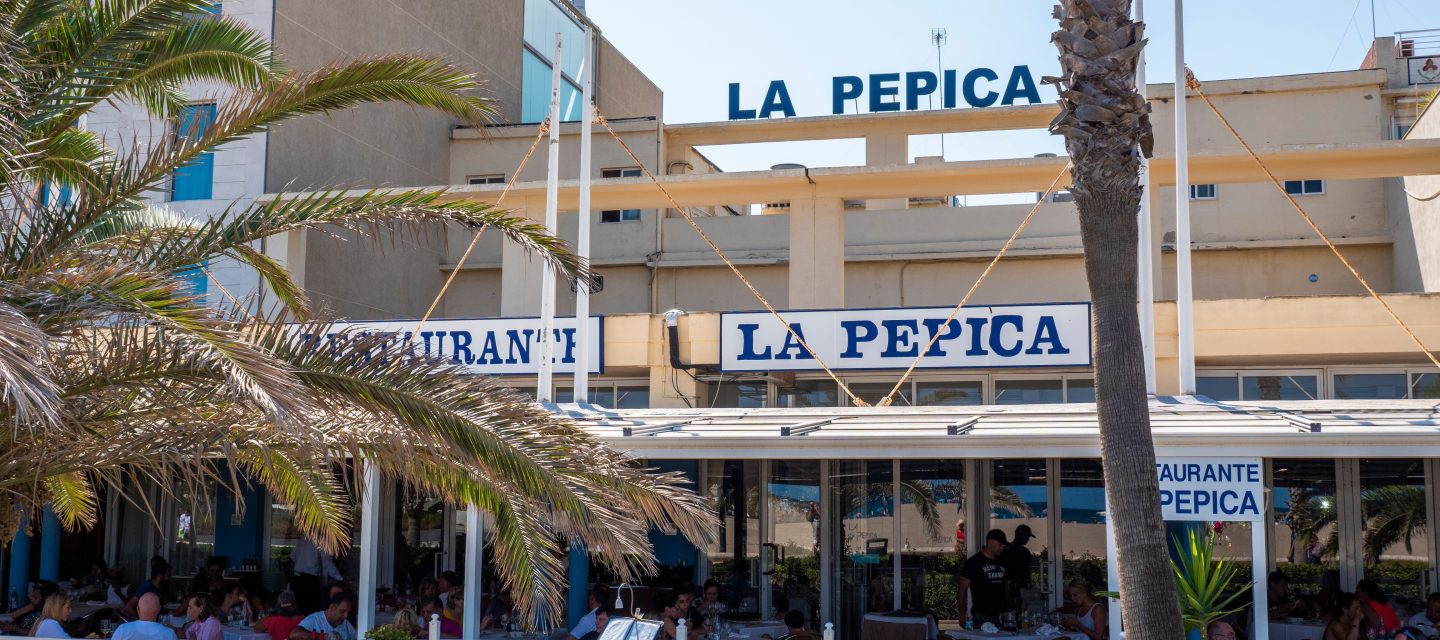

Valencia should have been playing in a brand-new stadium for years, but that ended up being the biggest fiasco ever. We don't mind: Mestalla is a classic football temple in Europe. On top of that, Valencia is a lovely city to spend a couple of days in.
Mestalla
It's hard to imagine that when Mestalla was built in 1923, it was situated outside of the city. The city has grown and nowadays the stadium, which is surrounded by high tower blocks, is quite centrally located. Unlike other giant Spanish stadiums, Mestalla isn't built in a ditch, hence why the stadium with 55,000 seats rises high above the streets. On the inside, you'll start to understand why this is such a beloved stadium. The steep, uncovered stands, the old main stand, the lights above the highest row and the giant scoreboard: Mestalla is a gem like no other.

Nou Mestalla
The mother of all stadium failures. Valencia should have already been playing at the Nou Mestalla for fifteen years, but things turned out completely different. The structure of Nou Mestall was nearly finished, but then the country was hit by the economic crisis of 2008. Meanwhile, we're 14 years into the future and not a single thing has changed since. The club and the city have been arguing about who has to pay for it. The 'stadium' on Carrer de la Safor is waiting for a solution, but there's still a long way to go until Valencia will play its first home game here. But it's also a question of whether or not that will ever happen.

Plaza d'Ayuntamiento
According to the Valencians it's the most beautiful square in Europe: We don't want to go that far, but it surely is a beauty. On this Plaza d'Ayuntamiento, the heart of Valencia, Los Che celebrate their titles. When the players appear on the balcony of the majestic town hall, the square is completely packed.
A little bit further on the square (in front of number 7) it all started for the club. Back in 1919, Valencia CF was founded in Bar Torino. A tile on the sidewalk marks the exact place.
Just around the corner on Avenida de María Cristina, you'll find the 'Bear Club', a pub where the interior of the old Bar Torino has been recreated. Notice the club's crest on the outside of the pub.
Plaza del Valencia CF
You have to go to Plaza del Valencia CF, diagonally opposite the main entrance of Mestalla, before the club's home matches. This is where fans gather before a match. If they play a big match, there are thousands of people on the square welcoming the coach with the players to encourage them. Next to the monument for the fans of Valencia, there are three lovely pubs: La Deportiva, Ciudad Real and the most beautiful of all, Bar Manolo el del Bombo.

Manolo el del Bombo
The bar of Manolo el del Bombo is actually more of a football museum rather than a bar, with wonderful photos of the history of Valencia and Spanish football in general. Unfortunately, Manolo - the famous drummer at Spain's international matches - suffered during the Covid crisis, and had to sell his bar. The good news is that, despite the bar being a little bit more trendy now, the new owners didn't change much about the interior of Manolo, and on match days Manolo is sometimes still present as well.
La Pepica
In the fifties of last century, Faas Wilkes was the first international star who came to play for Valencia, and with great success. His secret? To eat the best paella in town twice a week at Restaurante La Pepica, along the boulevard. The memories of Wilkes are kept alive by photos on the wall and by the owner, who proudly tells the story to every Dutchman who enters the place.

Tickets
Just like most of the Spanish clubs, it's not that hard to get tickets for Valencia. After you've created an account, you can order them on the club's official website. If you want to get a ticket for a big clash against Real Madrid or FC Barcelona, make sure you're on the website when the ticket sales go live.
How to get there
There is some parking space around Mestalla, but because of the central location, there's almost never a free spot, especially not when Valencia plays at home. The best thing you could do is take the metro, metro lines 5 and 7 pass by station Aragó, one block away from Mestalla.
Images: Shutterstock



